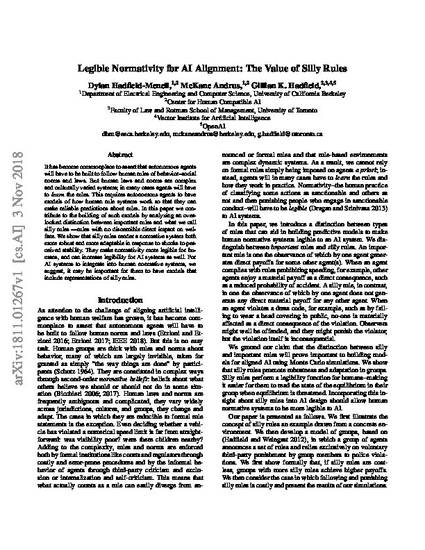
Unpublished Paper
Legible Normativity November 2018.pdf
(2018)
Abstract
It has become commonplace to assert that autonomous agents will have to be built to follow human rules of behavior–social norms and laws. But human laws and norms are complex and culturally varied systems; in many cases agents will have to learn the rules. This requires autonomous agents to have models of how human rule systems work so that they can make reliable predictions about rules. In this paper we contribute to the building of such models by analyzing an overlooked distinction between important rules and what we call silly rules —rules with no discernible direct impact on welfare. We show that silly rules render a normative system both more robust and more adaptable in response to shocks to perceived stability. They make normativity more legible for humans, and can increase legibility for AI systems as well. For AI systems to integrate into human normative systems, we suggest, it may be important for them to have models that include representations of silly rules.
Keywords
- artificial intelligence,
- value alignment,
- AI ethics and society,
- norms,
- culture,
- social order,
- law
Disciplines
Publication Date
November, 2018
Citation Information
Dylan Hadfield-Menell, McKane Andrus and Gillian K Hadfield. "Legible Normativity November 2018.pdf" (2018) Available at: http://works.bepress.com/ghadfield/66/
